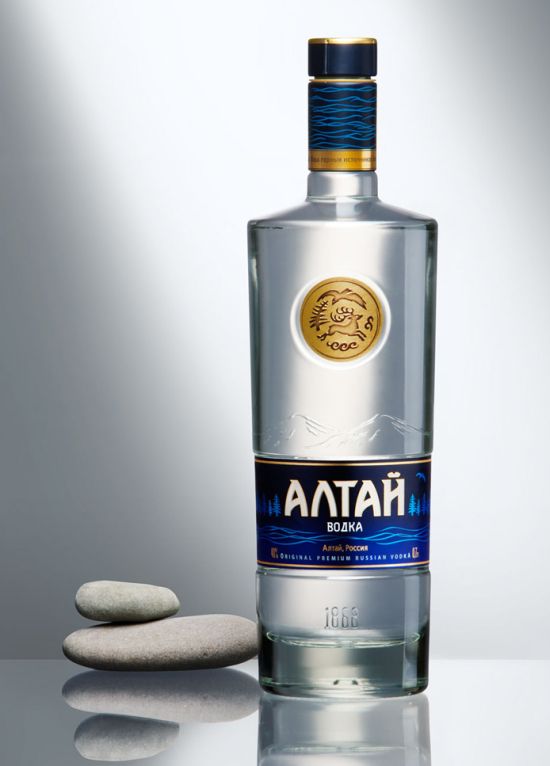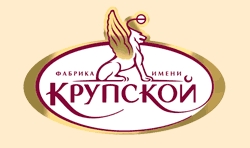This week Popsop has interviewed Coley Porter Bell CEO Vicky Bullen, who has led the team to the international recognition amongst clients far beyond the UK, including Russia. She tells about the projects with Pernod Ricard Rouss and Krupskaya Confectionery, discusses overseas opportunities for the UK design businesses and spots how to prevent Creative Britain from going in reverse.
Popsop: Dear Vicky, as you may know, your recently revealed package design works for two Pernod Ricard’s brands — Altay vodka and Olmeca tequila — have raised awareness of Coley Porter Bell as a prospective British brand and design partner among Russia’s industry people. Have you, in turn, ever considered Russia an attractive overseas market to expand your design business? Is there a single vector towards Russia for all WPP-oned companies spesialising in branding and design?
V.B.: Russia is a growing market and such is very attractive. At one point we did consider opening a Russian office, but we decided it would be better to build our business there by engaging with our clients’ global brands through their Russian operations, with all design work being controlled from London.
There is no single WPP vector towards Russia. As Sir Martin Sorrell often says his strategy for the different WPP agencies and networks is “kiss and punch.” So depending on the brief, sometimes we collaborate and put together teams drawing on expertise from across WPP’s vast range of disciplines. At other times we compete ferociously.
Popsop: Speaking, particularly, of the Altay vodka case. Did you work with Pernod Ricard Rouss directly or through the UK-based company’s office? Was there a pitch for the project? When and how did your collaboration on Altay redesign start?
V.B.: We worked with Pernod Ricard Rouss in Moscow directly. The project was a structural and graphic pitch against 3 other agencies. We had a relationship with Vadim Grigoryan (* former Marketing Director of Pernod Ricard Rouss, now Marketing Director of Creativity and Luxury at Pernod Ricard, Paris) in Moscow on other Pernod business for the Russian market and he asked us to pitch. The work started in 2006-2007.

Photo: packaging for Pernod Ricard Rouss’s Altay Vodka, redesigned by Coley Porter Bell
Popsop: Back in 2009, you worked with another Russian client — Krupskaya confectionery — on a large complex rebranding project which had encompassed refreshing the brand logo and developing pack designs for 3 company’s sub-brands as well as redefining the Pekar brand. Was it your first experience with a Russian client? Was it a difficult task for your team to dive into the brand’s long Soviet history in order to analyse and rethink its modern image? Now, in 2 years after the relaunch, do you think you’ve been successful enough to help the Krupskaya confectionery brand be more competitive?
V.B.: We found our Russian clients to be incredibly easy to work with. They knew their market and consumers well. They gave us an excellent briefing on the changing retail environment and the differences between Moscow and St. Petersburg chocolate brands. This was important as they are very different, and it was important for us to build on the much loved nature of the Krupskaya and Pekar brands.

Pic: The new one, created by Coley Porter Bell

Photo: new package design for the Troika chocolate bar
We used our proprietary approach Visual Planning to build a picture of the each brand’s visual essence. By agreeing this together with our client at the beginning of the project, we found it easy to develop design routes which answered our brief which was to modernise each brand without losing their heritage.
We understand that the designs have been well received by consumers and retailers and have provided good foundations for further design extensions at a local level.
Popsop: Speaking of other overseas opportunities, except Russia and CIS, what are the most favourable markets for the UK designers to spread their creative wings? Asia? Middle East? In short, do you agree with the DBA and UKTI policy of ‘exporting’ the UK’s design and branding services abroad as the right measure to overcome the recession in the industry and the country on the whole?
V.B.: There’s absolutely no doubt that Asia and The Middle East are the areas where we and many British agencies have been and will be successful. After all, they are the markets showing economic growth. And many of our client brands are global so we have to understand those markets.
We’ve had many briefs from global clients like Unilever and Pernod Ricard for Asia and the Middle East. But we’ve also had great success with local brands in India and the Gulf. So I do support the DBA approach.
Popsop: I’ve seen you recently announced the finalists for the CPB Shine Awards 2011. Please, tell us more about this initiative and its purposes.
V.B.: Creativity is our life blood. It’s our core competence. It’s what sets us apart from our clients and it’s what gives us the edge over our rivals. So Shine fulfils two important functions for CPB. Firstly it helps us win the war for talent by discovering the best young designers while building awareness of us as a prospective employer in the art colleges. But it also allows us to give something back by helping struggling young designers. It is becoming increasingly difficult to break into the industry so a £3000 bursary and a three month job placement is a real boost to the winners.
Popsop: To your mind, what the UK government bodies should do in the long term to prevent Creative Britain from going in reverse? How do you see the future of Britain’s creative industry in 5 years?
V.B.: I think that London is still considered a world centre of design excellence, but just as the UK lost its industrial lead in the world last century, we are in danger of losing our creative lead this century. There are two things the government can do to help us maintain our position and both concern education.
Our primary and secondary education is moving increasingly towards a tick box, multiple choice style approach favoured in countries like the US. We need to encourage a rich open-ended, uncoded approach to education which discourages conformity and where children are encouraged to think as individuals.
In the tertiary sector the government needs to reverse recent cuts in funding to our art schools and design colleges. Many say they are soft and too imprecise for the digital world. Let’s put all the money into engineering. But in the past four or five decades they have been astonishingly important in providing a stream of talented artists, designers, architects, musicians and writers. They are the heart of creative Britain and we must treasure them.

